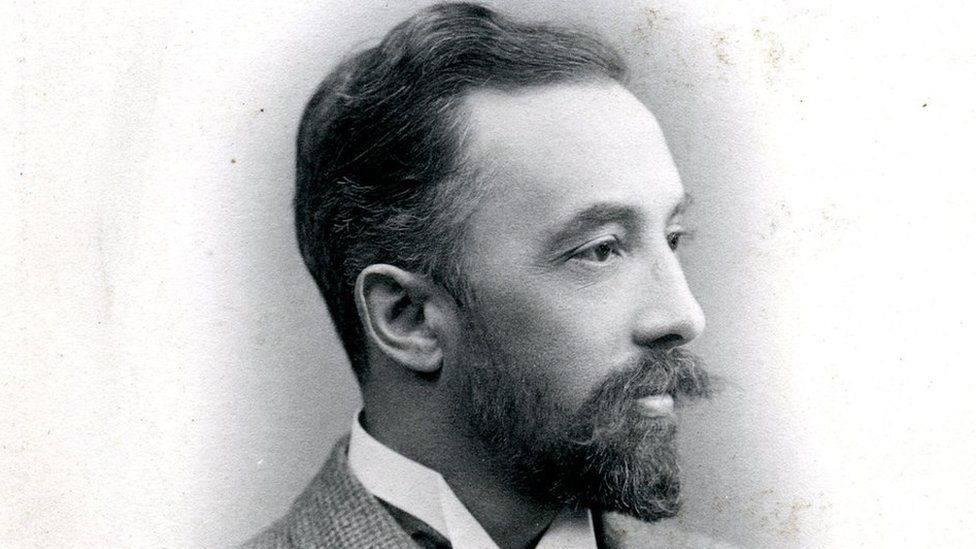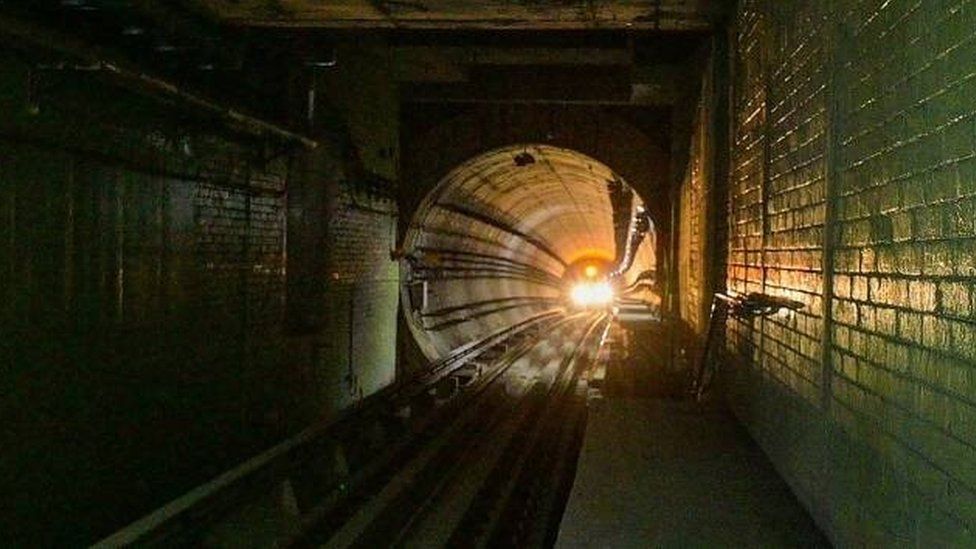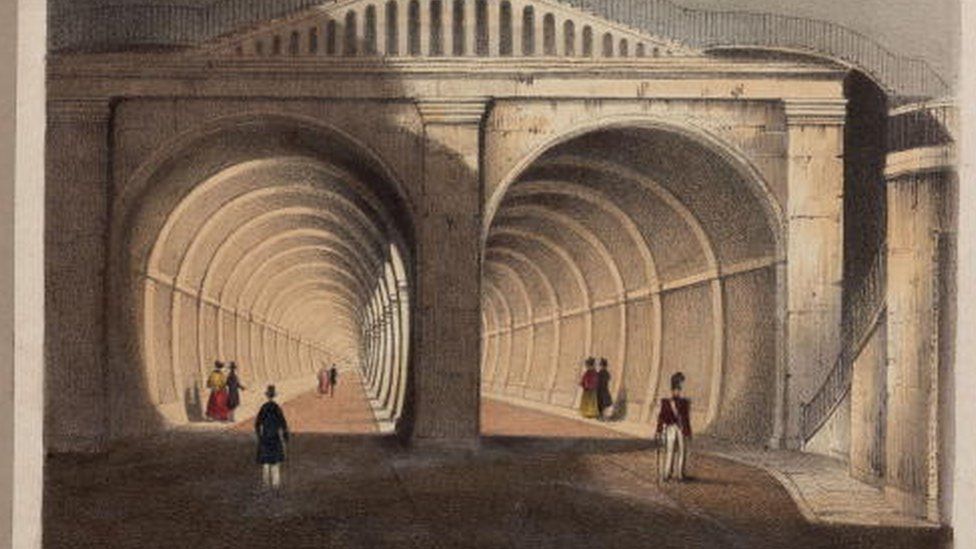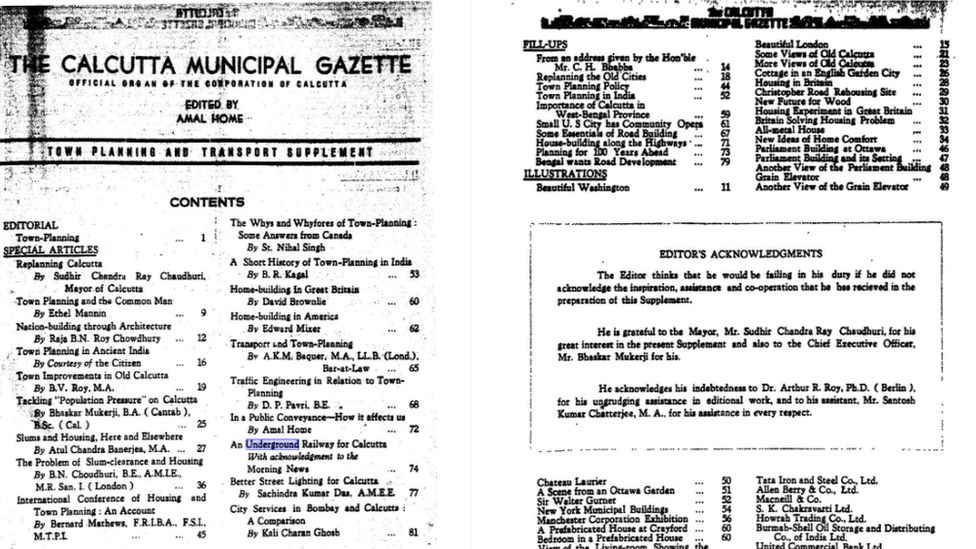Kolkata metro: A British engineer's unrealised India underwater train
 INSTITUTION OF CIVIL ENGINEERS ARCHIVE, LONDON
INSTITUTION OF CIVIL ENGINEERS ARCHIVE, LONDONWhen commuters in the city of Kolkata (formerly Calcutta) step aboard India's first underwater train later this year, a Bengal-born British engineer who conceived an unrealised underground railway for the city over a century ago is unlikely to cross their minds.
Sir Harley Dalrymple-Hay envisioned an ambitious 10.6km (6.5 miles) underground railway with 10 stops and featuring a tunnel beneath the Hooghly river, to connect Kolkata with its twin city, Howrah. However, due to insufficient funding and doubts about the geological properties of the city's soil, this grand plan never materialised.
Eventually, in October 1984, Kolkata did become the first Indian city to get a metro railway. From just 3.4 km long and five stations, it is today a busy 26 station 31-km network, half of which runs underground. Now in December, the metro will open India's first underwater section that will cross the Hooghly.
The twin tunnels under the river are 520 metres long and part of a 4.8 km (2.98 mile) stretch of the metro rail connecting Kolkata and Howrah. It lies 52ft below the riverbed and, once open, is expected to serve more than 3,000 commuters every hour.
 PTI
PTIThis underwater stretch of the metro is part of a longer link between Howrah and Salt Lake in eastern Kolkata that almost mirrors Sir Harley's 1921 design.
But Sir Harley did not design just one metro line - he designed an entire underground masterplan for Kolkata, with lines extending far north and deep south of central Kolkata.
He detailed all this in a book titled Calcutta Tube Railways. It is a rich collection of intricate, delicately tinted maps of Kolkata, drawings of the proposed metro lines and detailed cost estimates for the tube rail.
The engineer recommended the installation of escalators and fans at all stations. "The larger question of the maintenance of a comfortable temperature in trains and at the underground stations is of the greatest importance, especially having regard to the high temperature at the surface at certain seasons of the year in Calcutta," Sir Harley wrote.
When Sir Harley conceived of his Kolkata plan, underground railways were already running in London, Paris and New York.
On 10 January 1863, the Metropolitan Railway opened the world's first underground railway in London, between Paddington (which was then called Bishop's Road) and Farringdon Street.
 AFP
AFPThe world's first under-river tunnel - the Thames Tunnel - opened in January 1943 and was built by an engineer called Sir Marc Brunel and his son Isambard to allow cargo to be transported underneath the busy river. They ran out of money though, so to begin with, it just opened as an attraction for pedestrians. By 1921, however, at least 10 tunnels were in operation under the Thames for roads, pedestrians, utilities but mainly the Tube.
So, in many ways, a tunnel under the Hooghly in Kolkata was not a big deal when Sir Harley designed it in 1921.
Born in West Bengal's Birbhum district in 1861, he studied engineering in Edinburgh and then he joined the London Underground. He worked on the Bakerloo line, the Hampstead tube and the Piccadilly line. When the Imperial Legislative Council ruling British India at that time decided that Kolkata must have a tube rail, it gave Sir Harley the job in 1921.
Kolkata was no longer the capital of the British Raj but it was a busy hub of trade. Factories were thriving in Howrah. People streamed in from across India to work in the two cities. But public transport was scanty: the only road link between Kolkata and Howrah at that time was a pontoon bridge across the Hooghly. Boats would also take commuters across the river. The famous Howrah Bridge was opened only in 1943.
 SCIENCE & SOCIETY PICTURE LIBRARY
SCIENCE & SOCIETY PICTURE LIBRARYSir Harley designed the tube rail for the city without setting foot in Kolkata. He sent an assistant "to obtain all necessary information and to make such inquiries as would enable him to report on the question of construction of tube railway in Calcutta and the adjoining municipality of Howrah".
The first section of Sir Harley's proposed network aimed to connect Bagmari, an eastern Kolkata neighbourhood, to a place called Benaras Road in Howrah.
However, with a projected cost of £3.5m, the metro proved excessively expensive to finance.
In December 1947, The Calcutta Municipal Gazette published front-paged news of the end of the city's tube rail dreams.
"Having regard to the cost involved, they thought the best thing would be to have an overhead railway," said a municipal councillor after a meeting. There were also doubts about whether Kolkata's "alluvial, clayey and lazy" soil would come in the way of building a tunnel under the Hooghly.
 CALCUTTA CORPORATION GAZETTE
CALCUTTA CORPORATION GAZETTESo, the grand plan of India's first underwater railway was officially buried.
Though his tube rail plan never saw the light of day, Sir Harley has left a stamp on Kolkata. In 1928, the city's electricity supply company, CESC, asked him to build a tunnel under the Hooghly to send power cables from Kolkata to Howrah. He took up the challenge, on the condition CESC would use a contractor that he trusted. CESC agreed and in 1931 Kolkata's first underwater tunnel came into being.
Sir Harley's tunnel under the Hooghly remains in use to this day. Just that only power cables run through it, and not trains.
Monideepa Banerjie is a Kolkata-based independent journalist
No comments:
Post a Comment